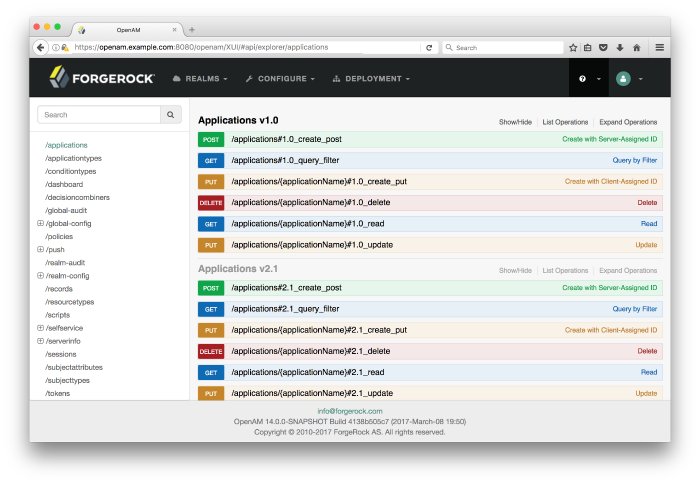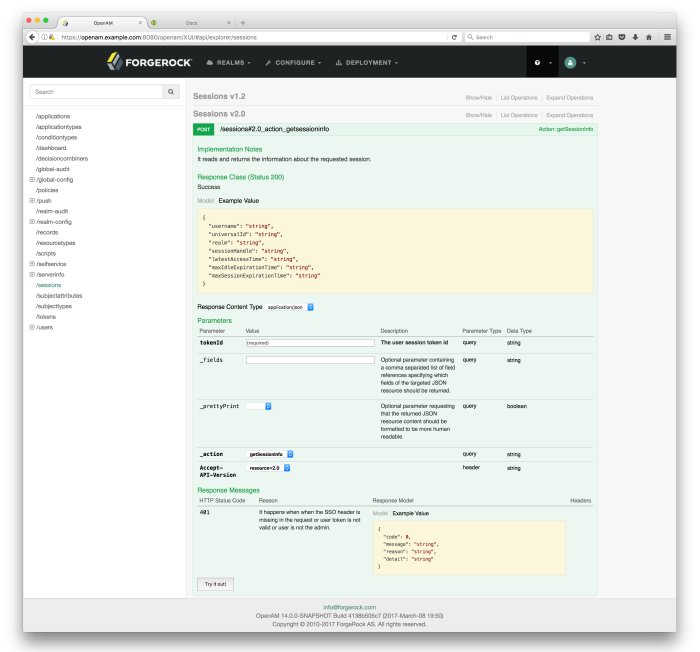REST API Explorer
AM provides an online AM REST API reference that can be accessed through the AM administration console. It displays the REST API endpoints that allow client applications to access AM's services.
Tip
The API Explorer is enabled by default. To disable it in production environments, navigate to Configure > Global Services > REST APIs, and select Disabled in the API Descriptors drop-down list.
The key features of the API Explorer are the following:
API Versioning. The API Explorer displays the different API versions available depending on your deployment.
Detailed Information. The API Explorer provides an Expand Operations button for each available CRUDPAQ method. When Expand Operations is pressed, you can view implementation notes, successful response class, headers, parameters, and response messages with examples. For example, the
requestPayloadfield can be populated with an example value. Also, if you selectModel, you can view the schema for each parameter, as seen below:Try It Out. The API Explorer also provides a Try It Out feature, which allows you to send a sample request to the endpoint and view the possible responses.
Note the following when using the Try It Out feature in the API Explorer:
The example payload values are auto-generated, and whilst they may be the correct data type, their value may not be corect for the API to function correctly. Check the Model tab for a description of the value required, and replace the example values before sending the REST request to AM.
Endpoints in the API Explorer are hard-coded to point to the top-level realm. You must adjust either the domain, or the path in the request if you need to target a different realm.
For more information, see Specifying Realms in REST API Calls.
Log into the AM console as an administrator.
You can access the API Explorer in one of two ways:
Point your browser to the following URL:
https://openam.example.com:8443/openam/ui-admin/#api/explorer/applications
You can also click the help icon in the top-right corner, and then click API Explorer.


